Minutes Did Not Exist During The Middle Ages
Conny Waters - AncientPages.com - Medieval people used many instruments to keep track of time. During the Middle Ages, a combination of water clocks, sundials, and candle clocks could tell time, but none could determine the time to the minute.
Prague astronomical clock. Steve Collis from Melbourne, Australia - CC BY 2.0
Minutes were simply not used to measure time during the Middle Ages. Both the medieval and modern "day" (sunrise to sunrise) contain 24 hours, but medieval hours varied in length with the month and the time of day.
While the best water clocks told time to the quarter hour, people could tell time to the minute until the wide use and improvement of mechanical clocks.
On the equinoxes (March 21 and September 21), a medieval daylight hour equaled a nighttime hour, each containing a modern 60 minutes. But on Christmas in medieval London, a daylight hour contained only 40 minutes, while each nighttime hour contained 80 minutes. Of course, on St. John's Day (June 24), a medieval daylight hour in London had 80 minutes, and a nighttime hour contained only 40 minutes.
Žatec clock. Tower clock of Hop and Beer Temple. image credit: Martin Stross - CC BY-SA 3.0
We measure time in units of sixty because we still use the system worked out by the Sumerian civilization, which flourished in Mesopotamia about 2,000 B.C.E.
The Sumerians invented the Sexagesimal System based on the number 60. Sixty seconds in a minute, sixty minutes in an hour - and the Sumerians also had a calendar with 360 (60x6) days in a year. To make it work for all time units, the Sumerians also fixed twelve hours (double six) in a day, midnight, and roughly 12 months in a year (especially in a 360-day year).
The Babylonians, who lived after the Sumerians in Mesopotamia, also based their mathematics on the number 60. It was because the number 60 is a superior, highly composite number, having factors of 1, 2, 3, 4, 5, 6, 10, 12, 15, 20, 30, and 60.
The ancient Egyptians were no different and used time calculation on the number 60. They divided their year into three 120-day seasons of four months of 30 days. They defined the hour as either 1/12 of daytime or 1/12 of nighttime.
However, it took a long time before we started using minutes as a time measurement.
Jost Burgieven is credited with inventing the minute hand in 1577. The minute hand was not widely added to clocks until the 1680s. The mechanical clock was developed to a reasonable accuracy level in the 14th and 15th centuries.
In the 17th century, pendulum clocks were developed, enabling the measurement of seconds and minutes. The Royal Society in the U.K. first proposed the second as a unit of time. The duration of a beat or half period (one swing, not back and forth) of a pendulum one meter in length on the earth's surface is approximately one second.
Written by Conny Waters - AncientPages.com Staff Writer
Copyright © AncientPages.com All rights reserved. This material may not be published, broadcast, rewritten or redistributed in whole or part without the express written permission of AncientPages.com
Expand for referencesMore From Ancient Pages
-
 Yamna Culture Started Cannabis Trade 5,000 Years Ago
Ancient History Facts | Aug 6, 2016
Yamna Culture Started Cannabis Trade 5,000 Years Ago
Ancient History Facts | Aug 6, 2016 -
 How Extensively Did Early Farmers Utilize Europe’s Rich Forests For Raising Their Livestock?
Archaeology | Nov 13, 2024
How Extensively Did Early Farmers Utilize Europe’s Rich Forests For Raising Their Livestock?
Archaeology | Nov 13, 2024 -
 On This Day In History: Feast Day Of The Venerable Bede – Remarkable Priest, Monk And Scholar – On May 25, 735
News | May 25, 2016
On This Day In History: Feast Day Of The Venerable Bede – Remarkable Priest, Monk And Scholar – On May 25, 735
News | May 25, 2016 -
 Pitted Ware Culture – Neolithic Scandinavians Used Skin Boats To Trade And Travel Across Large Distances
Archaeology | Sep 11, 2024
Pitted Ware Culture – Neolithic Scandinavians Used Skin Boats To Trade And Travel Across Large Distances
Archaeology | Sep 11, 2024 -
 Empusa – Shape-Shifting Evil Female Demon In Greek Myth And Folklore
Featured Stories | Jun 3, 2020
Empusa – Shape-Shifting Evil Female Demon In Greek Myth And Folklore
Featured Stories | Jun 3, 2020 -
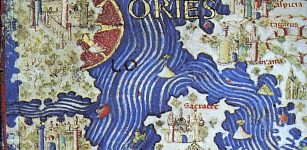 Fra Mauro Medieval Map: Accurate And Detailed Work Attesting To Advanced Geographic Knowledge Of Contemporary Cartographers
Artifacts | Feb 8, 2019
Fra Mauro Medieval Map: Accurate And Detailed Work Attesting To Advanced Geographic Knowledge Of Contemporary Cartographers
Artifacts | Feb 8, 2019 -
 Medieval Ring Found In Piast Stronghold Near Gniezno, Poland – Is A Unique Christian Artifact
Archaeology | Nov 28, 2019
Medieval Ring Found In Piast Stronghold Near Gniezno, Poland – Is A Unique Christian Artifact
Archaeology | Nov 28, 2019 -
 Brown Hares And Chickens Were Seen As Gods Not Food In Iron Age Britain
Archaeology | Apr 12, 2020
Brown Hares And Chickens Were Seen As Gods Not Food In Iron Age Britain
Archaeology | Apr 12, 2020 -
 Were Owl-Shaped Plaques Children’s Toys In Copper Age?
Archaeology | Dec 1, 2022
Were Owl-Shaped Plaques Children’s Toys In Copper Age?
Archaeology | Dec 1, 2022 -
 On This Day In History: Battle of Salamis Was Fought – On Sep 22, 480 BC
News | Sep 22, 2016
On This Day In History: Battle of Salamis Was Fought – On Sep 22, 480 BC
News | Sep 22, 2016 -
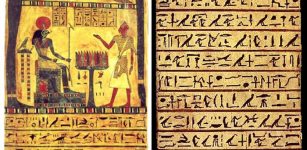 Strange History Of Stele Of Ankh-ef-en-Khonsu – ‘Stele Of Revealing’ Gave Birth To Thelema, A New Religion
Artifacts | Apr 3, 2018
Strange History Of Stele Of Ankh-ef-en-Khonsu – ‘Stele Of Revealing’ Gave Birth To Thelema, A New Religion
Artifacts | Apr 3, 2018 -
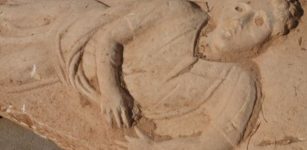 Unique 1,800-Year-Old Stone Sarcophagus Exposed In Ashkelon Building Site
Civilizations | Sep 6, 2015
Unique 1,800-Year-Old Stone Sarcophagus Exposed In Ashkelon Building Site
Civilizations | Sep 6, 2015 -
 What Is The Meaning Of Ankh – Ancient Egyptian Symbol
Ancient Symbols | Sep 21, 2023
What Is The Meaning Of Ankh – Ancient Egyptian Symbol
Ancient Symbols | Sep 21, 2023 -
 Mysterious Medieval Cemetery In Wales With People Buried In Unusual Positions Puzzles Archaeologists
Archaeology | Jan 3, 2024
Mysterious Medieval Cemetery In Wales With People Buried In Unusual Positions Puzzles Archaeologists
Archaeology | Jan 3, 2024 -
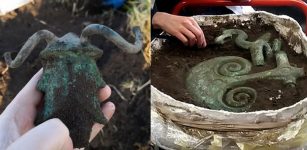 Mysterious Kallerup’s Double-Headed Figurine – Evidence Of Unknown Norse God Or Worship Of Roman God Janus In Ancient Scandinavia?
Artifacts | Mar 19, 2020
Mysterious Kallerup’s Double-Headed Figurine – Evidence Of Unknown Norse God Or Worship Of Roman God Janus In Ancient Scandinavia?
Artifacts | Mar 19, 2020 -
 Mysterious Ancient Dark Object Hidden In The Colorado Mountains – What Happened To It?
Featured Stories | Jun 17, 2024
Mysterious Ancient Dark Object Hidden In The Colorado Mountains – What Happened To It?
Featured Stories | Jun 17, 2024 -
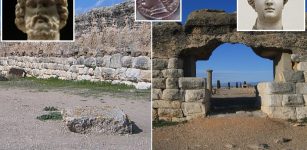 Ancient City Empuries (Emporiae) With Best Greek Ruins Located Outside Of Greece
Featured Stories | Dec 29, 2022
Ancient City Empuries (Emporiae) With Best Greek Ruins Located Outside Of Greece
Featured Stories | Dec 29, 2022 -
 Incredible Ancient Metallurgical Wonders That Defy Explanation And Pose A Real Mystery Even Today
Civilizations | Apr 21, 2014
Incredible Ancient Metallurgical Wonders That Defy Explanation And Pose A Real Mystery Even Today
Civilizations | Apr 21, 2014 -
 Home Of Jesus’ Apostles Found In The Lost Biblical Town Bethsaida
Archaeology | Aug 10, 2017
Home Of Jesus’ Apostles Found In The Lost Biblical Town Bethsaida
Archaeology | Aug 10, 2017 -
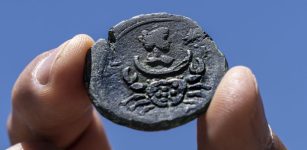 Rare 1,850-Year-Old Bronze Zodiac Coin Discovered During Underwater Survey Off Israel’s Coast
Archaeology | Jul 27, 2022
Rare 1,850-Year-Old Bronze Zodiac Coin Discovered During Underwater Survey Off Israel’s Coast
Archaeology | Jul 27, 2022


